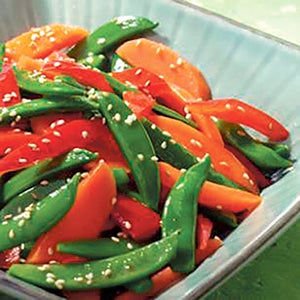Frozen food is nutrient-rich
Published 7:01 am Sunday, October 25, 2015
By Courtney Kremer
Hy-Vee Dietitian
A common question heard by dietitians everywhere is, “What about frozen foods — especially fruits and vegetables? Aren’t they less nutritious than fresh?”
I am aware there does seem to be a pervasive myth that frozen foods are not as nutritious as fresh. In fact, customers often react with surprise when they find out that, according to the FDA, there is virtually no nutritional difference between fresh and frozen produce.
Why?
If you think about it, even “fresh” produce may have traveled several days from the time of harvest to when it gets to the produce department in your local grocery store. During that time, the produce will lose some of its nutritional value. Fresh produce usually has been picked a little before it’s fully ripe. This could result in less than maximal nutrient development. On the other hand, frozen food, especially fruits and vegetables, is often harvested when more ripe. The harvest is usually early in the day, so the fruit or vegetable is packaged and frozen by the end of the day or even sooner. This short time between harvest and being packaged frozen maximizes the retention of nutrients.
Yet another benefit from using frozen fruits and vegetables is that they are often more reasonably priced than many fresh items. This is particularly true when not in season. There aren’t seasonal spikes in price like there is in fresh produce and availability is more consistent as well. Sales on frozen vegetables and fruits can make them an even better purchase, thus stretching the customer’s buying power even more.
Frozen vegetables are less likely to have added sodium, and frozen fruits are less likely to have added sugar in them, if comparing them to canned produce. An additional benefit of frozen is the wide assortment of fruits and vegetables available. Frozen foods provide the opportunity for consistent variety in meals and snacks, plus a wider source of essential nutrients, no matter the season.
One last benefit of using frozen vegetables and fruits is that waste can easily be minimized. Individually frozen pieces allow the whole bag to be used at once, or for only one to two servings. Re-closing the bag tightly after opening will protect the remainder in the bag from freezer burn until ready for use another time.
If you are trying to increase the nutritional content of meals, look for opportunities to add extra vegetables to soups, stews, casseroles and even frozen individual meals. The MyPlate food guidance system suggests that half the plate or bowl at each meal be filled with vegetables, fruits or a combination. With frozen fruits and vegetables ever ready, you’ll always be able to meet this guideline for a healthy lifestyle.
Now you know frozen food, especially fruits and vegetables, can provide quick, easy, very economical, and nutritious options for healthy eating. What are you waiting for? Start by trying this recipe for dinner tonight.
The information is not intended as medical advice. Please consult a medical professional for individual advice.
Sesame Snap Peas
with Carrots and Peppers
Serves 4 (¾ cup each)
Preparation time: 20 minutes
 All you need
All you need
•1 large carrot, peeled and thinly sliced or cut into julienne strips (about 1 cup)
•10 oz frozen sugar snap peas (about 2 cups)
•1 small red bell pepper, cut into strips (about 1 cup) OR frozen bell pepper strips
•1 tbsp reduced-sodium soy sauce
•1 tbsp toasted sesame oil
•1 tsp sesame seeds
Freshly ground black pepper, to taste
All you do
1. Place carrot pieces in a steamer basket. Put the steamer basket over a saucepan with 2 inches of boiling water in the bottom and steam for 3 to 4 minutes.
2. Add sugar snap peas and red pepper strips to steamer basket, being careful not to get burned. Cover and steam for additional 3 to 5 minutes or until desired tenderness is reached.
Remove from the heat. Transfer contents of steamer basket to serving dish. Toss with soy sauce, sesame oil, sesame seeds and black pepper.




